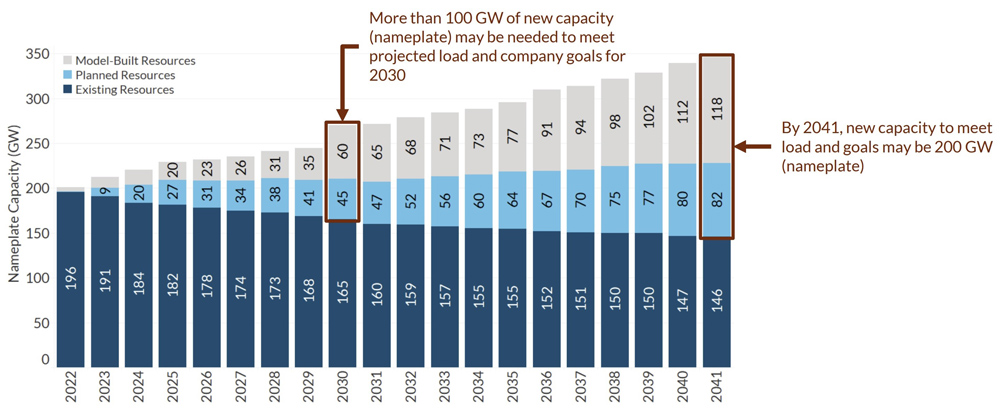Discussions Continue on Market Seller Offer Cap
VALLEY FORGE, Pa. — Load interests continued to oppose PJM’s proposal to change the market seller offer cap (MSOC), a month after it failed to meet the two-thirds endorsement threshold at the July 27 Markets and Reliability Committee meeting.
The proposal, which would ensure sellers are always able to represent the cost of their Capacity Performance (CP) risk when offering into the Base Residual Auction, had won only 60.4% support, as load sector stakeholders expressed concern over its impact on capacity prices. (See Change to PJM Market Seller Offer Cap Falls Short.)
The rule change would set the MSOC at the greater of the CP quantifiable risk (CPQR) or net avoidable-cost rate (ACR) inclusive of CPQR. PJM said it would address circumstances in which a unit with a positive CPQR value has that cost offset by an otherwise negative net ACR, which could result in a $0 offer cap. PJM had hoped to win stakeholder and FERC approval for the change effective with the 2024/25 capacity auction in December.
Load interests remained cool to the idea at the MRC on Wednesday.
Gregory Carmean, executive director of the Organization of PJM States Inc. (OPSI), asked PJM’s Pat Bruno why it was in buyers’ interests to “pay upfront the default costs of a supplier.”
“We think it’s in consumers’ interests to achieve competitive outcomes in the auction results,” Bruno responded. That result, he said, is “clearing the cheapest set of resources including the risk of nonperformance.”
Susan Bruce, representing the PJM Industrial Customers Coalition, suggested more work was needed before considering the proposal. “Are we ready for prime time with this vote?” she asked.
Independent Market Monitor Joe Bowring said PJM’s proposal would displace the Monitor’s role in setting the offer cap and fails to adequately define CPQR.
“We do not agree that what’s being proposed is a competitive outcome, or that it’s a narrow change,” he said. “You simply can’t have an unlimited adder that’s not defined in the tariff.”
Bowring said not using net energy revenues as an offset to CPQR breaks the “essential link” between the energy market and the capacity market, which generally means lower capacity prices when energy market prices are high. Because PJM has not defined how it would calculate the CPQR or the asserted opportunity cost, the RTO cannot say that the impact would be small, Bowring said.
Carl Johnson, representing the PJM Public Power Coalition, said his members agree with Bruce’s and Bowring’s concerns.
“I’ve become convinced we cannot have this discussion separate from the holistic” discussions at the Resource Adequacy Senior Task Force, he said. The proposal “is such an open door to market power that I don’t see how PJM could effectively mitigate it.”
However, Johnson said his members “do want to represent CPQR in their offers, so they wouldn’t go as far as [Bowring] recommended.”
Jason Barker of Constellation Energy said PJM’s proposal is “consistent with real-world economic decisions” that generation owners are making.
“PJM’s proposal is welcome; it’s ready; and it solves a very distinct problem that sellers encounter time and again,” he said. “A compulsory capacity commitment is not risk-free.”
Manuel Esquivel of Enel North America also expressed support, saying the status quo is not just and reasonable.
Tom Hoatson of LS Power also called for change to the offer cap, saying current rules result in “over-mitigating.” He said his company supports the PJM proposal with several revisions, including that the CPQR should be based on the market seller’s view of the risk of taking on a capacity obligation.
“This risk is viewed differently by different market sellers, and the market seller’s view of this risk is commercially sensitive,” he said. “One size doesn’t fit all, and the process needs to reflect that.”
LS Power also would change the deadline for requesting an exception to the must-offer requirement, making it at least five days after receipt of the final unit-specific MSOC value from PJM and the IMM. The current deadline is the same day as when the final MSOC is issued.
Hoatson also said all models, data and methodologies that the Monitor and PJM use to make their determinations should be made available to the market seller before their decisions are made.
Under the current rules, “it’s a black box,” Hoatson said. “We don’t know how the numbers were arrived at, so we can’t debate them with the IMM and PJM. Perhaps we’re wrong. Perhaps the other side is wrong. We don’t know.”
GreenHat Payments Expected by January
PJM Assistant General Counsel Mark Stanisz told members that the RTO should receive $1.375 million in disgorgements from the principals of the defunct GreenHat Energy by the end of January.
Under settlements approved by FERC on Aug. 19, two of GreenHat’s founders and the estate of the third agreed to pay the disgorgements. The principals also consented to the entry of a $179.6 million judgment against the company, reflecting the losses suffered by PJM market participants when GreenHat defaulted on its obligations in the financial transmission rights market in 2018. (See FERC OKs GreenHat Settlements.)
But PJM has no hope of recovering any of the nearly $180 million, Stanisz said. GreenHat “has no funds and no assets,” he said.
FERC ordered PJM to distribute the disgorged monies “in a reasonable manner” approved by the commission’s Office of Enforcement. The RTO said it will likely do so in a single distribution.
In response to a request from Constellation, PJM said it would advise market participants where they will see the disbursements in their billing statements.
Revised Bankruptcy Rules
PJM proposed changes to its credit policies to provide greater protections against bankruptcies by market participants, the RTO’s latest response to the GreenHat default.
The revisions would clarify that PJM has a first priority security interest in market participants’ cash deposits.
PJM would also require that a party filing for bankruptcy immediately address the RTO’s rights with a “first day” motion ensuring the full repayment of pre-petition obligations and the continuation of post-petition obligations.
The new language aims to demonstrate to bankruptcy courts that PJM has interests that are set apart from “garden variety” creditors, Assistant General Counsel Eric Scherling told the MRC. Though there are limitations on PJM’s ability to compel action from parties that have filed for bankruptcy, the revisions are aimed at making the proceedings go more smoothly to mitigate potential losses from delays.
“PJM is different, and we want to basically do whatever we can … to lay the groundwork as to why PJM is different,” Scherling said.
Tariff language would be changed to clarify that FTR transactions “are entitled to the special protections given to ‘forward contracts,’ ‘swap agreements’ and ‘master netting agreements’” under the U.S. Bankruptcy Code, including exceptions from automatic stays and allowing for immediate termination or liquidation.
The revisions were endorsed by the Risk Management Committee in July after meeting to discuss the issue six times. The proposal is expected to go before the MRC for approval next month.
FERC already approved revisions to PJM’s credit policy for FTR transactions in September 2018, setting a minimum credit requirement for FTRs equal to 10 cents/MWh (ER18-2090).
FTR Manual Changes Endorsed
The MRC endorsed revisions to Manual 6: Financial Transmission Rights as part of a periodic review and changes to conform with tariff revisions intended to increase the transparency and efficiency of the RTO’s auction revenue rights and FTR markets. The changes were approved by FERC in March (ER22-797). (See FERC Accepts PJM ARR/FTR Market Changes.)
Variable Environmental Costs and Credits Rules OK’d
Members approved an update to rules governing variable environmental charges and credits and their inclusion in cost-based energy offers. Generation units receiving production tax credits or renewable energy credits must reflect them in their fuel-cost policies when submitting non-zero cost-based offers into the energy market. The changes will include revisions to Manual 15: Cost Development Guidelines and Operating Agreement Schedule 2. (See “Variable Environmental Costs and Credits,” PJM MIC Briefs: May 11, 2022.)
Johnson thanked PJM for addressing Old Dominion Electric Cooperative’s concerns regarding differentiating fuel costs from emissions costs.
The update will be brought to a Members Committee vote in September.


